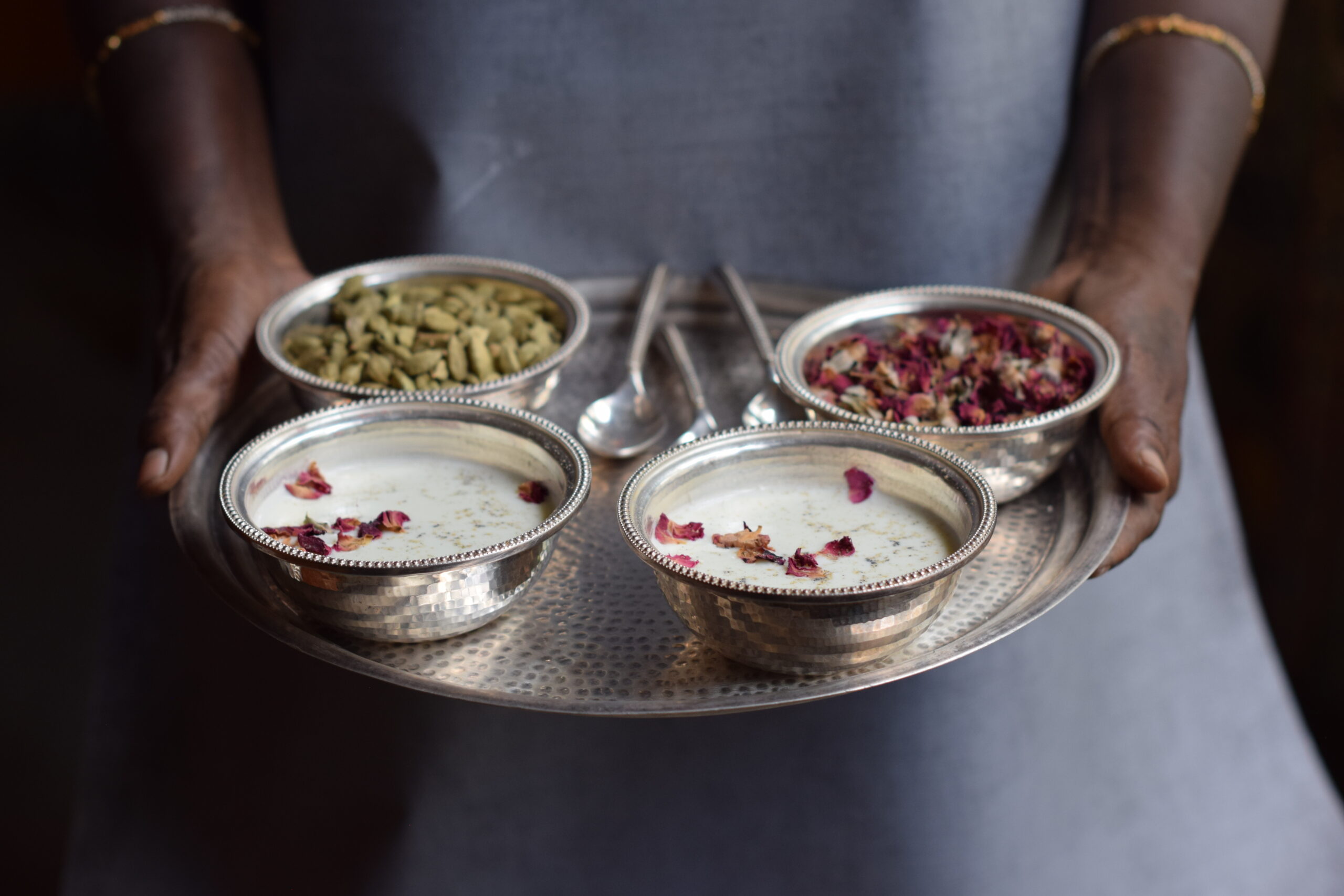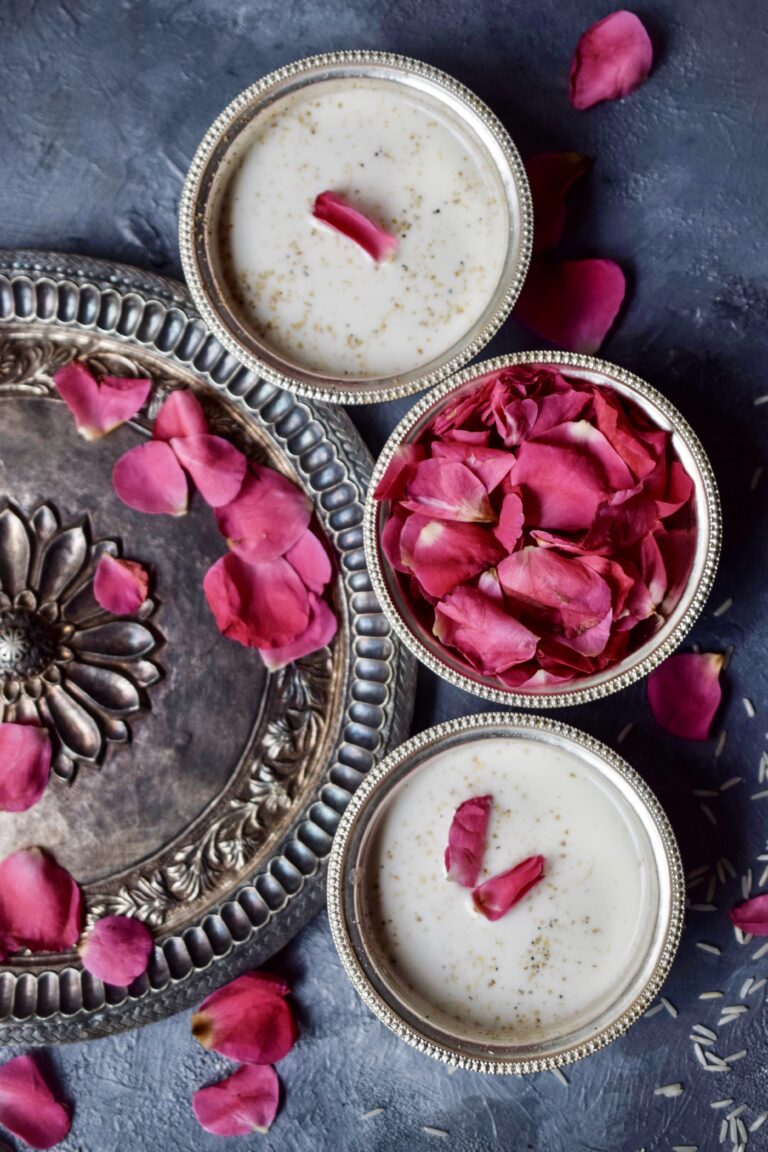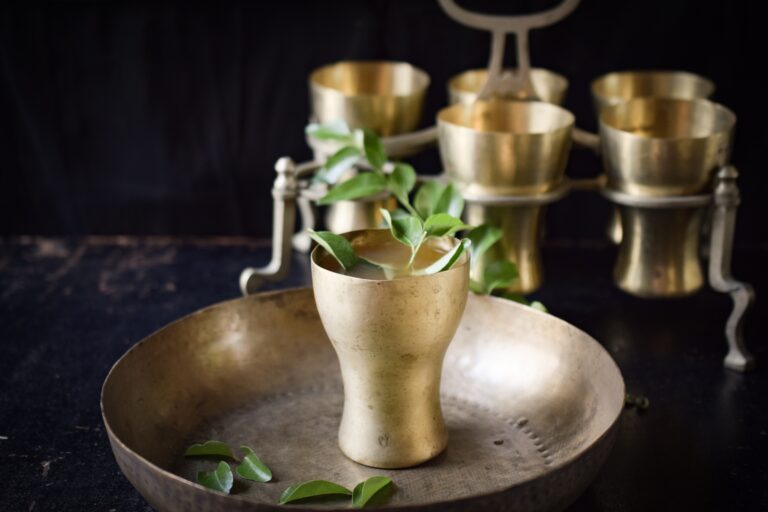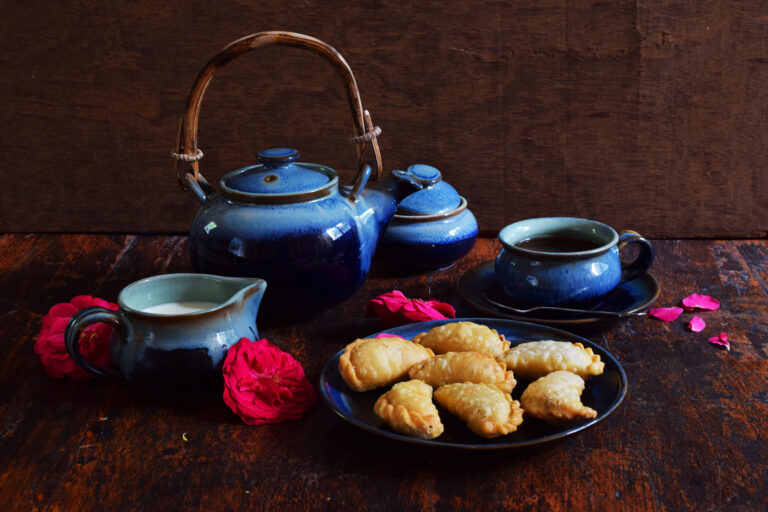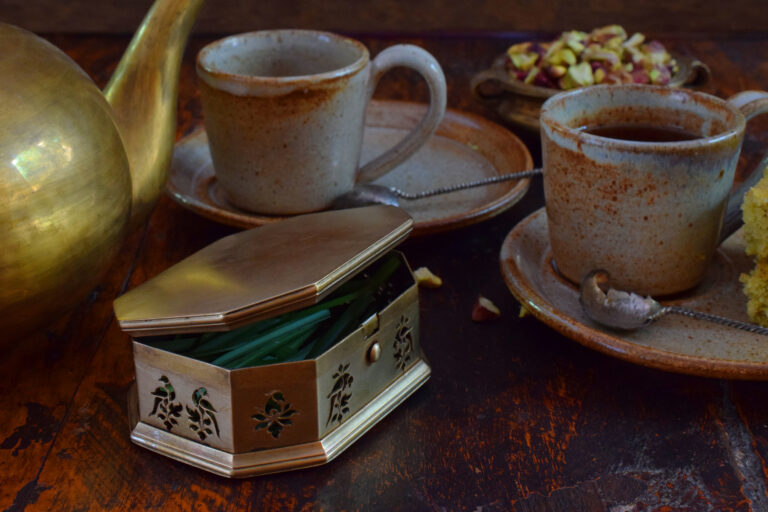When I was a girl, the full moon known as Sharad Purnima, marking the end of the monsoon, was a special occasion among a group of close family friends, who would enjoy the evening by the beach. The parents would chat as the kids played in the sand on Marina Beach, which was then pristine and beautiful! These outings were special as they created a special bond within the Gujarati community in Chennai.
So my earliest memories of kheer are to do with these nights, when my mother always carried her dudh-poha (beaten rice) variation, soaked soft in milk. Dudh-poha kheer is a customary Sharad Purnima dessert. There was such simplicity in that dish, yet how fantastic it tasted! Even now, it takes me back to those nights. I distinctly remember the almost silver sands and the beautiful moon reflecting upon the sea, and how we kids ran about and were warned not to go into the sea to wet our feet, for the waters were choppy and full moons always cause higher tides. We marvelled at the waves from a distance, all the while waiting to be called to have our cup of kheer. I remember the excitement of waiting the entire week for this outing as my mother called the other aunties to make the plan.
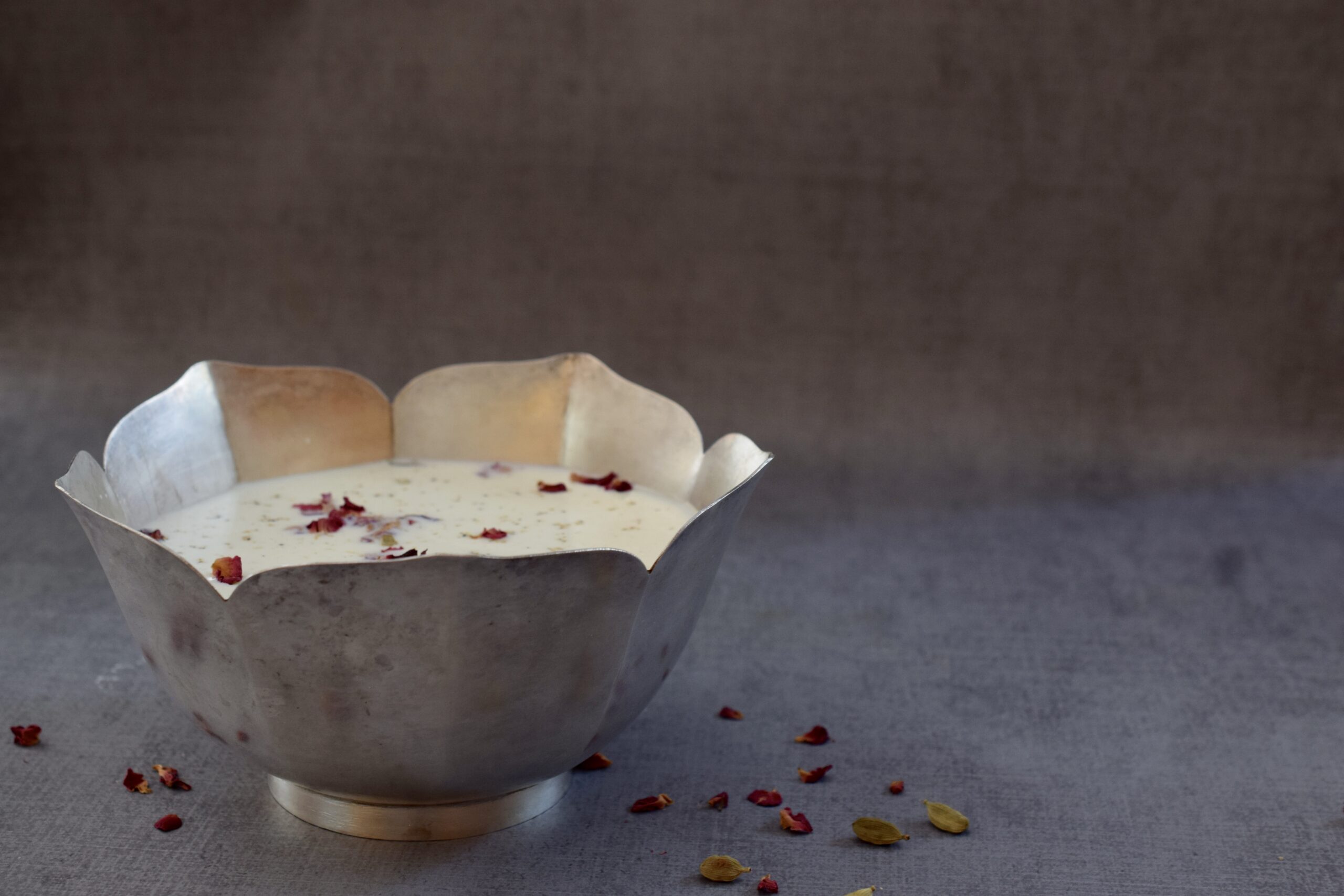
Kheer is basically an Indian rice pudding, with variations across the subcontinent. In South India, it is known as payasam, and is made using a number of different recipes with ingredients as wide-ranging as jaggery, vermicelli, sago, coconut, carrot, ghee and jackfruit. A Hyderabadi version even uses bottle gourd. A sweetened, spiced North Indian version rich with nuts, enhanced with rose water, is known as rabri.
Significantly, the old and infallible combination of milk and rice has traditionally been used as a ritual offering in Hindu customs. The practice is that food both cooked and uncooked is served to the Gods, thereby rendering it holy. It is then distributed to all present as blessed food, and is known as prasad or prasadam.
Kheer is so simple, yet profound, which is why it is so popular both as a prasad and as a regular treat: rice contains life within itself, while cow milk is considered sacred. Sugar, of course, is what turns many a dish into a dessert.
My mother’s kheer was sheer simplicity, but also sheer perfection: poha, milk and sugar with a pinch of cardamom. The one I will pass on to my children, and which I am so delighted to share with you, is almost as simple – but with that signature re:store touch.
Rose-Coconut Kheer
(Yield: 8-10 cups)
½ cup basmati
4 cups whole milk
¾ cups sugar
1 cup freshly squeezed coconut milk
2 tablespoon coconut shavings
½ teaspoon cardamom powder
2 tablespoons rose water
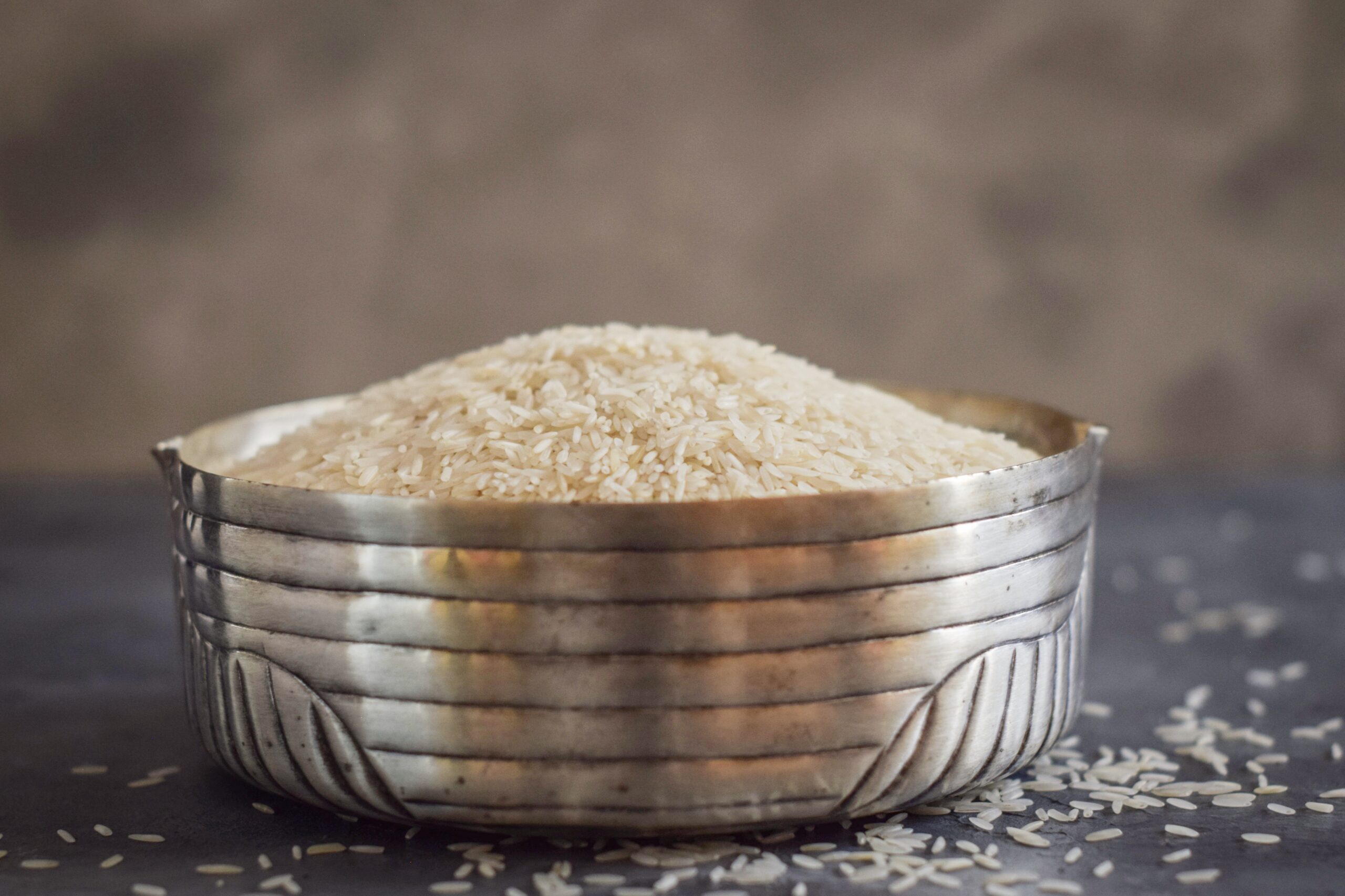
Basmati rice is the long-grained aromatic variety commonly used in biryanis and pulaos. Soak the basmati in water for half an hour. This will help the grain cook faster.
In a heavy-bottomed pan, add the milk. Once it is warm, add the soaked rice. On a low flame, allow the rice to cook thoroughly, stirring frequently to ensure it doesn’t stick to the bottom of the pan. This will take approximately 45 minutes.
Now add the sugar, then allow it to cook a little more. Let the rice mixture cool slightly, then very gently hand blend it. Cover the saucepan and allow the mixture to cool to room temperature, then refrigerate.
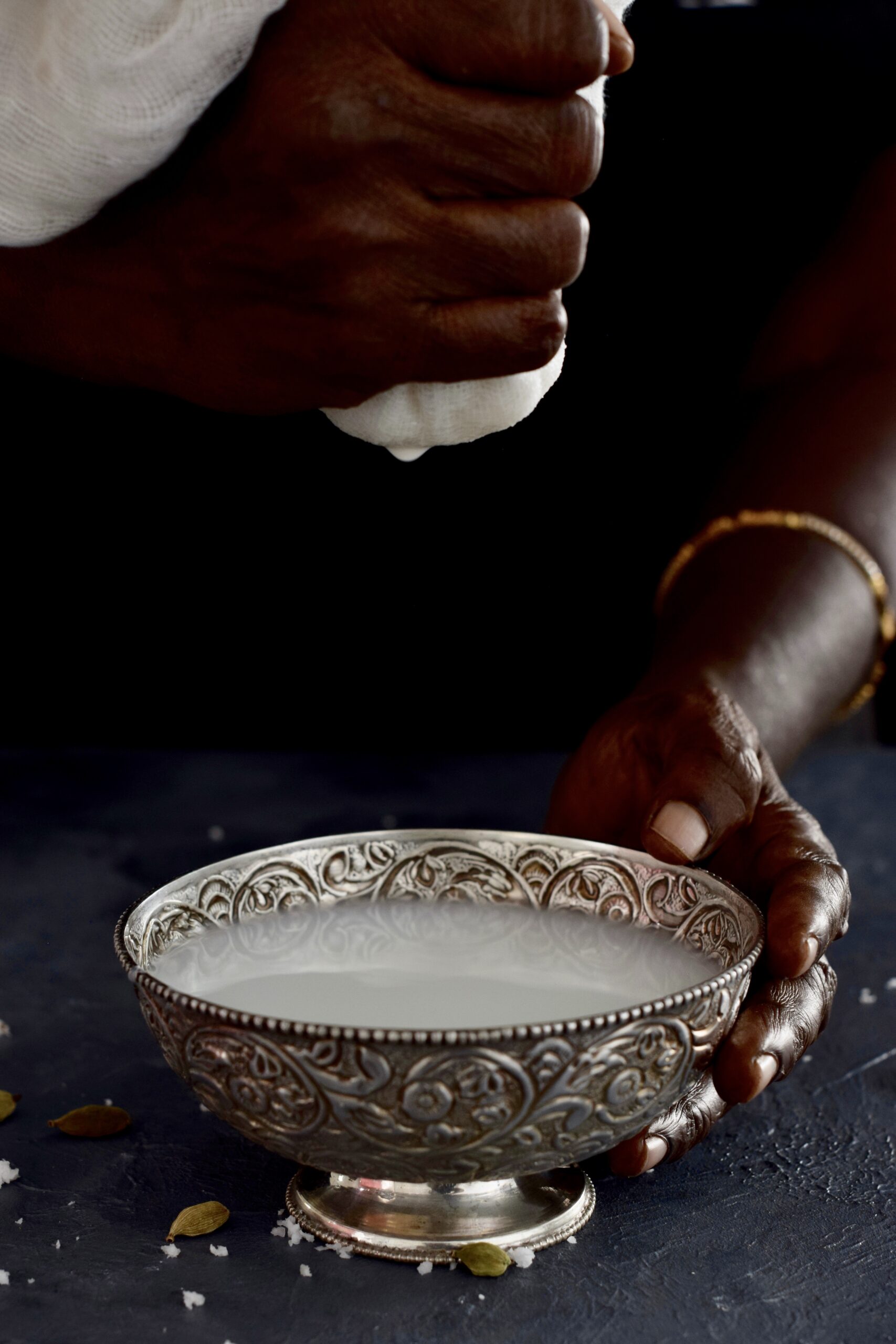
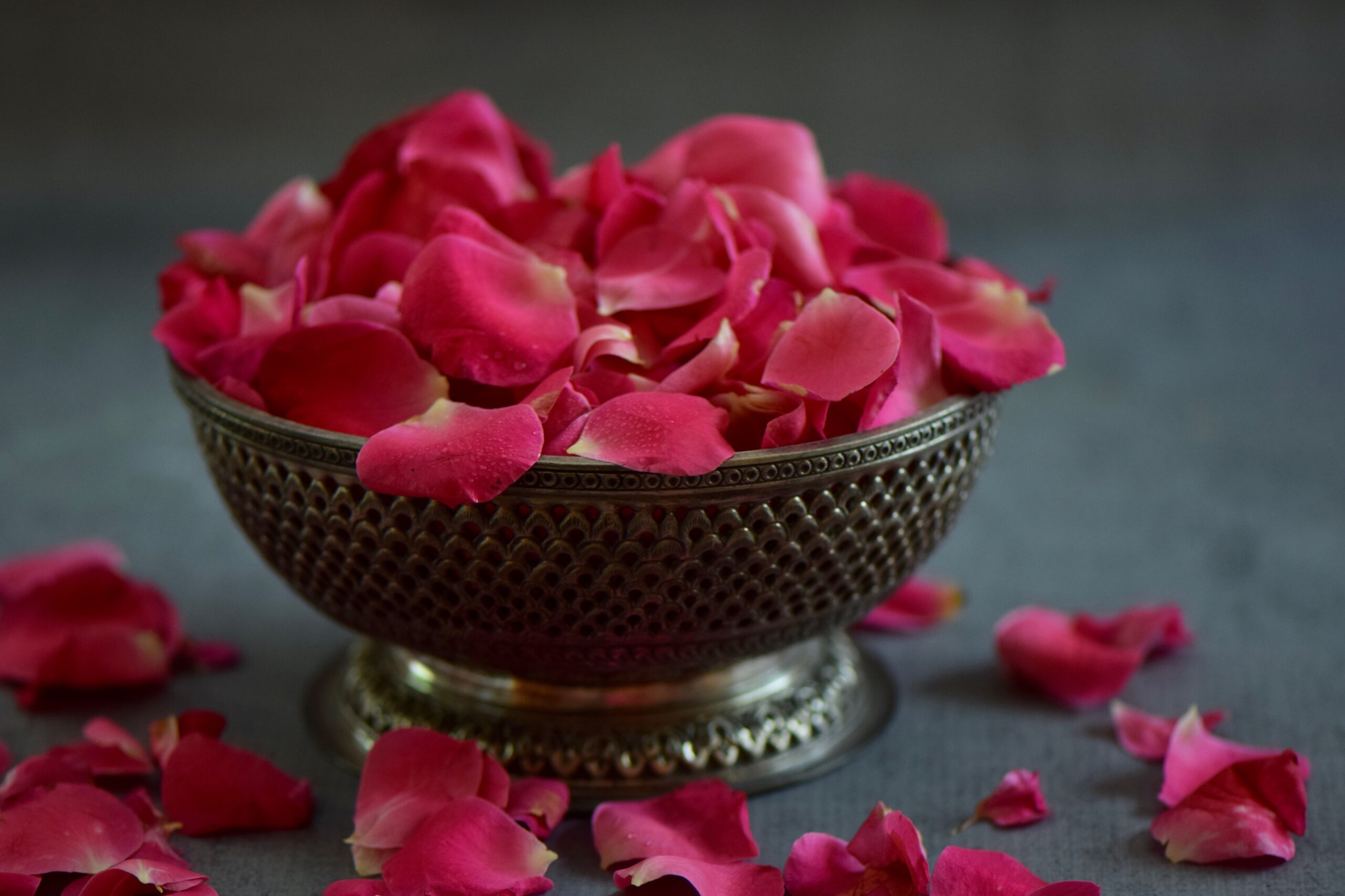
When the kheer has cooled and thickened, add the coconut milk to your desired consistency. Add the shaven coconut, rose water and half the cardamom powder and stir so that the flavours are well-blended. Rose water is a signature ingredient in many of my cakes at re:store, because the scent reminds me of one of my favourite flowers. Known in South India as the paneer roja, the damask rose inspires many of my innovations in the kitchen. The Mughals brought roses to India, as seen in the Shalimar gardens. They were distilled as much for their fragrance as for their usage in culinary delights like syrups and sweetmeats.
Cover and refrigerate until serving. When you are ready to serve this dessert, you may wish to add more coconut milk. Don’t forget to sprinkle the remaining cardamom powder to decorate.
Nostalgia is what makes our food special. Each family recipe is special only to them because it is intertwined with memories. Memories and love: the two main ingredients of any recipe. Today, my best dishes are those that my mother taught me and some that I learnt from my mother-in-law. Some day I will pass these on, too – along with my own innovations. I have made several promises to visit my children when they have their own families to go cook for them. It’s funny how when I cook, my children relish the dishes and claim they are “finger-licking good”. But when our cook makes the same dishes, they are simply edible or enjoyable. So much of taste is through what is evoked emotionally. So whenever you try a new recipe in your kitchen, remember that it is going to become a mnemonic too. Fill it with love.
As I write this, the month of Ramadan is coming to a close. All over the world, sweets are an integral part of the iftar customs when the day’s fast is broken at dusk. In India, iftar meals are almost always accompanied by kheer. At sundown, after the fast-breaking prayers, people step out to enjoy the breeze and socialise, visiting sweetmeat shops to enjoy their favourite Ramadan delights. Street food also becomes very exciting at this time, and the air is thick with the smells of delicious treats and an ambience of love and celebration. I love the idea that kheer is being enjoyed all over the country today – and perhaps in your home too, wherever you are in the world. Don’t forget to drop a line if you enjoy this recipe!
